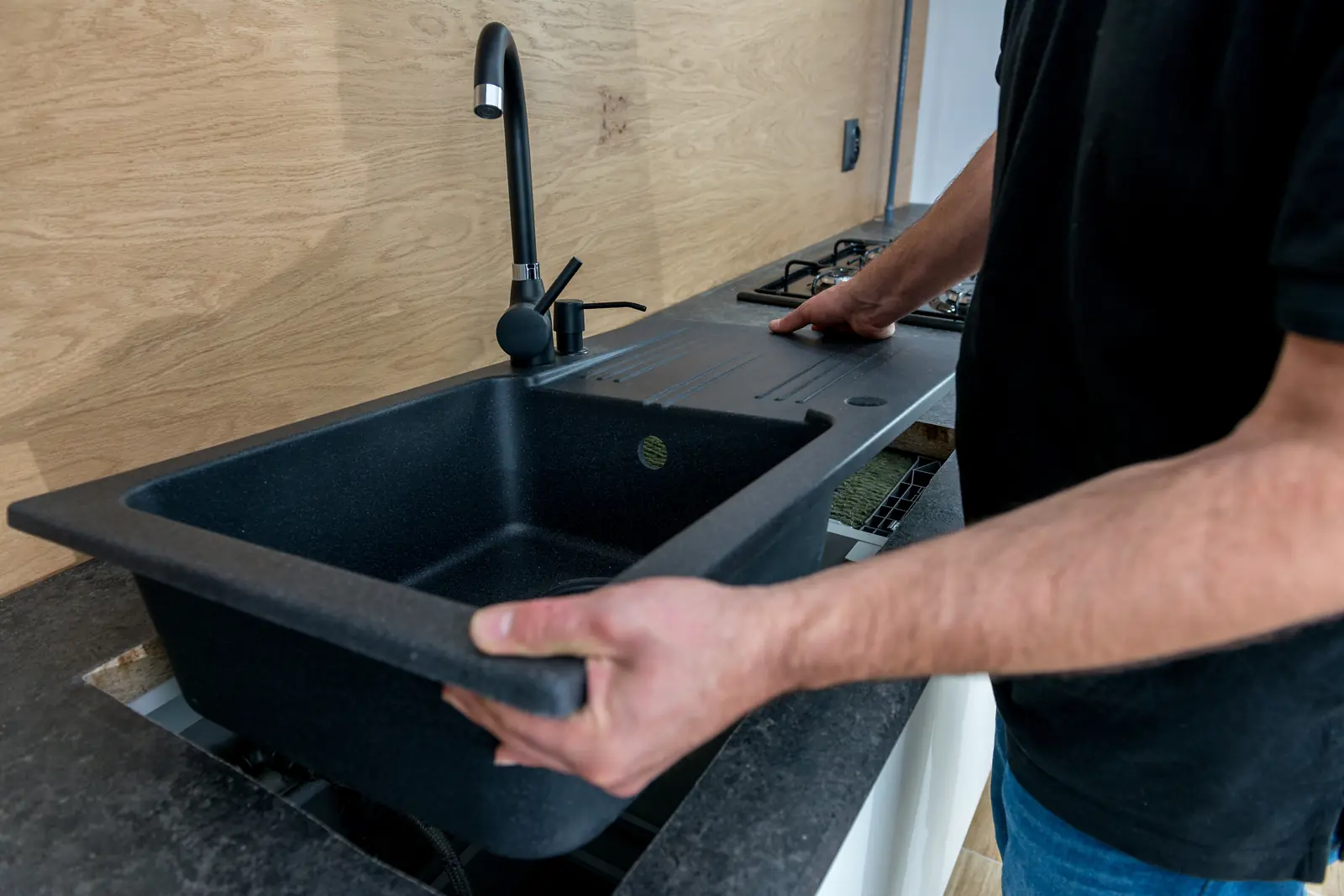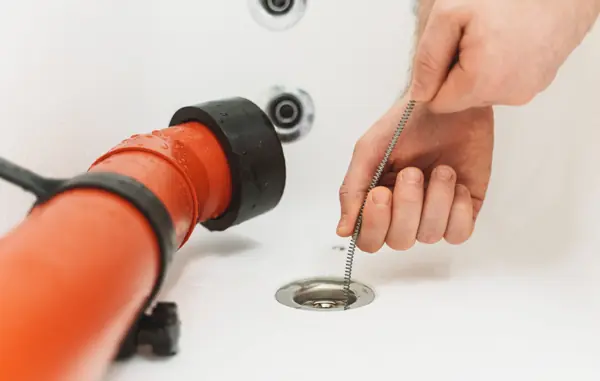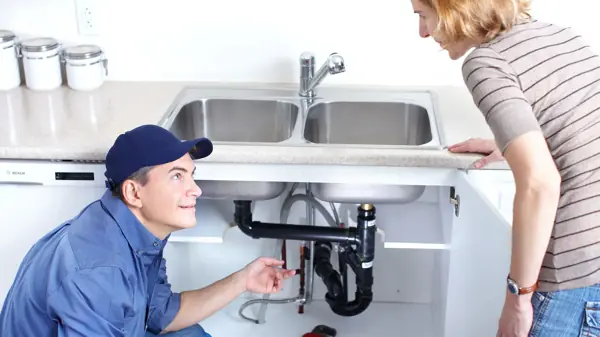Installing a new sink seems straightforward, but even minor errors can lead to frustrating issues like leaky pipes. If you’ve ever noticed a puddle forming under your sink or a slow drip that won’t stop, you’re not alone. These leaks are often the result of improper installation—whether it’s a misaligned drain, a poorly sealed connection, or even using the wrong type of piping.
The good news? Understanding the common pitfalls of sink installation can help you avoid these headaches. And if you’re already dealing with a leak, there are steps you can take to fix the problem before it causes any serious damage. Let’s talk about how these mistakes happen and what you can do to prevent or repair them.
What are common sink installation mistakes that cause leaky pipes?
Common sink installation mistakes that can cause leaky pipes include:
- Incorrect Pipe Alignment: If the pipes are not properly aligned during installation, tension and stress can be created on the joints, leading to leaks. Misaligned pipes may not connect securely, causing gaps where water can escape.
- Inadequate Sealing: Failing to apply the correct type or amount of sealant around pipe connections, sink edges, or the drain can result in leaks. Over time, even small gaps can allow water to seep through, leading to significant damage.
- Over-Tightening Connections: Over-tightening pipe fittings or connections can crack the pipes or fittings, leading to leaks. It can also damage the seals, reducing their effectiveness in preventing leaks.
- Using Incompatible Materials: The right piping material or mismatched components can ensure good connections. For example, connecting metal and plastic pipes without the proper adapters can lead to leaks at the junctions.
- Improper Drain Installation: Incorrect sink drain installation, such as failing to secure the drain flange tightly or using the wrong size gasket, can cause leaks around the drain area.
- Neglecting to Check for Leaks: Failing to thoroughly check for leaks after installation can allow small issues to be noticed until they become major problems. A quick inspection with water running can help catch any potential leaks early.
Avoiding these mistakes and ensuring proper installation techniques can help prevent leaks and extend the life of your sink and plumbing system.
How can improper sink installation lead to water damage?
Improper sink installation can cause water damage in numerous ways, often causing major home damage. Misaligned pipes, poor sealing, or defective drain connections can cause gradual, persistent leaks in an improperly installed sink. These leaks may go undetected, letting water gather behind walls, under floors, and in cabinets.
Leaking water can distort, swell, and decay wood and other materials, weakening your building. Persistent wetness fosters mold and mildew growth, which can spread swiftly and harm inhabitants. Leaks can damage cabinetry, floors, and walls, requiring pricey repairs.
Moisture also attracts termites and carpenter ants, worsening the damage. If the leak is near electrical wiring, it could cause shorts or fires. Poor sink installation must be addressed immediately to minimize water damage and preserve a safe, healthy home.
What are the signs of leaky pipes after a sink installation?
After a sink installation, the signs of leaky pipes can initially be subtle but may become more apparent as the issue progresses. Here are some common indicators to watch for:
- Water Stains or Puddles: Visible water stains, dampness, or puddles under the sink or around the base of the sink cabinet are clear signs of a leak. Even small amounts of water accumulation should be investigated.
- Musty Odor: A persistent musty or moldy smell from the area under the sink often indicates hidden moisture or mold growth caused by a leak.
- Warped or Damaged Cabinetry: If the wood or material in the sink cabinet or nearby flooring appears warped, swollen, or discolored, it could be due to prolonged exposure to water from a leaky pipe.
- Increased Water Bills: An unexpected rise in your water bill may indicate a leak, even if it’s not immediately visible. Continuous leaking can waste a significant amount of water over time.
- Mold or Mildew: Visible mold or mildew growth around the sink, on the walls, or inside the cabinets is often a result of a leak. Mold thrives in damp environments and can spread quickly if the leak is not addressed.
- Dripping Sounds: A consistent dripping sound from under the sink, even when the faucet is turned off, suggests a leak in the pipes or connections.
- Low Water Pressure: A decreased water pressure when using the sink could indicate a leak in the pipes, as water escapes before reaching the faucet.
Suppose you notice any of these signs after a sink installation. In that case, it’s important to address the issue promptly by inspecting the plumbing and, if necessary, calling a professional plumber to fix the leak and prevent further damage.
How do you identify and fix sink installation errors that result in leaks?
Identifying and fixing sink installation errors that result in leaks involves carefully inspecting the installation and taking corrective actions as needed. Here’s how to approach it:
Identifying Sink Installation Errors
- Visual Inspection: Check under the sink for water stains, puddles, or moisture to identify leaks. Check pipes, couplings, and connections for gaps and misalignment.
- Listen for Drips: Turn off the faucet and listen closely for dripping sounds. This can help pinpoint the location of a leak, even if it’s not immediately visible.
- Check for Loose Connections: Gently wiggle the pipes and connections to see if any are loose. Loose connections are a common source of leaks and can usually be tightened by hand or wrench.
- Monitor Water Pressure: If you’ve noticed a drop in water pressure, it could indicate a leak in the pipes. Compare the water pressure at the sink to other faucets in the house to identify any discrepancies.
- Inspect Sealants and Gaskets: Check the sink-countertop junction and drain connection. The leak may be caused by damaged, degraded, or incorrectly applied sealant or gaskets.
- Use Tissue or Paper Towels: Run water through the sink and wipe around all connections and joints with a dry tissue or paper towel. Any wet spots on the tissue will reveal where leaks are occurring.
Fixing Sink Installation Errors
- Tighten Loose Connections: If pipes or fittings are loose, use a wrench. Be careful not to over-tighten, as this can damage the pipes or fittings and create new leaks.
- Reapply Sealant: Clean the sink or drain and apply a new waterproof sealant or plumber’s putty if the sealant is damaged or missing. Let it cure completely before using the sink.
- Replace Faulty Gaskets: Replace old or incorrectly placed sink drain or pipe gaskets. The gasket should be the right size and material for the purpose.
- Realign Pipes: If the pipes are misaligned, loosen the connections slightly and carefully realign the pipes to ensure a proper fit. Once aligned, tighten the connections securely.
- Replace Damaged Components: If pipes, fittings, or other components are cracked or damaged, replace them with new parts. Use the correct materials that are compatible with your plumbing system.
- Test for Leaks: After repairs, run water through the sink and check all connections and joints for leaks. Address earlier issues.
- Consult a Professional: If you can’t identify or fix the leak yourself or if the issue is complex, it’s advisable to contact a professional plumber. They can diagnose and repair the problem correctly to prevent future leaks.
By carefully inspecting your sink installation and correcting errors, you can prevent leaks and ensure a properly functioning plumbing system.
Fix Leaky Pipes: Prevent Installation Errors!
We understand how frustrating leaky pipes can be at Hi-Desert Plumbing, especially from improper sink installation. Our experienced team is here to ensure your plumbing is installed correctly the first time, preventing costly leaks and water damage. If you’re dealing with a leak or want to avoid future issues, trust us to deliver top-quality installation and repair services.
Don’t let small mistakes lead to big problems—contact Hi-Desert Plumbing today and protect your home with expert, reliable plumbing solutions.





